Something went wrong!
Hang in there while we get back on track
Best attractions in Lombardy
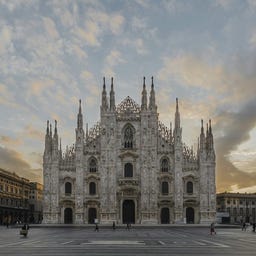
The Gothic Milan Cathedral is a true masterpiece and the city's most iconic landmark. With a construction period spanning nearly 600 years, from 1386 to 1965, it is even the largest cathedral in Italy. Be sure to visit the rooftop for stunning panoramic views over Milan — standing up there among the delicate sculptures is an incredible experience.
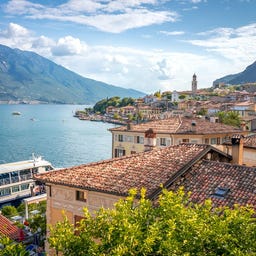
Lake Garda, Italy’s largest lake, is a paradise for both nature lovers and culture enthusiasts. Surrounded by majestic mountains and serene shores, the lake offers a rich variety of activities. Highlights include the Scaligero Castle in Sirmione, a picturesque medieval fortress on a peninsula, and Malcesine, where a cable car takes you up to Monte Baldo. The charming town of Limone sul Garda, with its lemon groves, and the watersports hub of Riva del Garda also draw visitors. Here, you can immerse yourself in the region's rich history while soaking in its stunning landscapes.
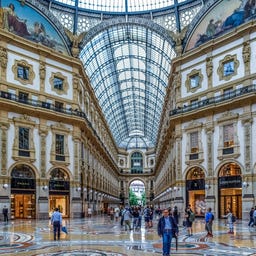
The Galleria Vittorio Emanuele II is Italy's oldest shopping gallery and a significant landmark in Milan. The magnificent glass roofs and mosaic floors make every visit an experience. Enjoy an espresso in one of the elegant cafes or shop in the luxury stores.
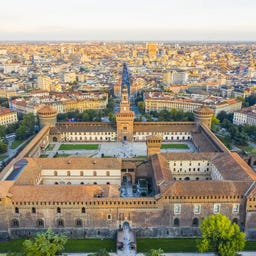
In the heart of Milan stands the mighty fortress from the 15th century. Once the seat of the powerful Sforza family, it now houses museums with valuable art treasures, including works by Michelangelo, Filippo Lippi, and Leonardo da Vinci. A walk through the courtyards and visiting the museums offers a fascinating insight into the Renaissance.
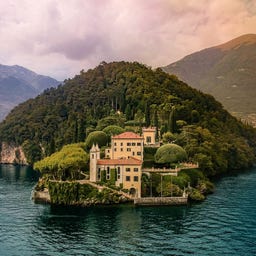
Lake Como, framed by the foothills of the Alps, is famous not only for its picturesque scenery but also as a retreat for international celebrities. George Clooney brought the spotlight to the region with his Villa Oleandra, and stars like Donatella Versace and Madonna regularly spend their summers here.
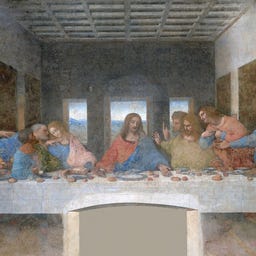
You’ll find Leonardo da Vinci's world-renowned painting "The Last Supper" at the Santa Maria delle Grazie Convent. The art work is located in the dining hall and depicts, in impressive detail, the moment Jesus reveals the betrayal that will lead to his death to his disciples. The expressive faces and masterful composition make it an unparalleled Renaissance masterpiece. It is the largest work of da Vinci, except the Sala delle Asse.

The Teatro alla Scala is a temple of opera, where the greatest masterpieces of music history have been performed since 1778. Its magnificent neoclassical facade and opulent interior with red velvet seats are impressive. As one of the world's finest opera and ballet theaters, La Scala has hosted and thrilled the best singers and artists from around the globe. Experiencing a performance here is an unforgettable event.
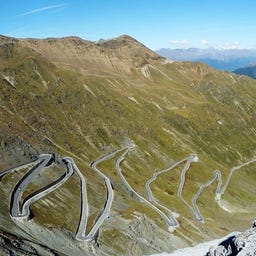
At 2,757 meters, the Stelvio Pass is more than just one of the highest roads in the Alps – it’s a true challenge for those bold enough to take on its 48 steep hairpin turns. This legendary route, revered by cyclists and drivers alike, rewards those who reach the summit with stunning views of the Ortler Alps, dominated by the mighty Ortler, the crown jewel of the Stelvio National Park.
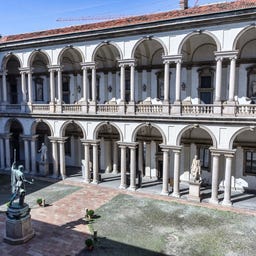
The Pinacoteca di Brera is a world-class art museum housing an impressive collection of Italian masterpieces from the 13th to the 20th century. Works by Caravaggio, Raphael, and Bellini fill its splendid halls. The historic building and surrounding gardens invite a relaxing stroll.
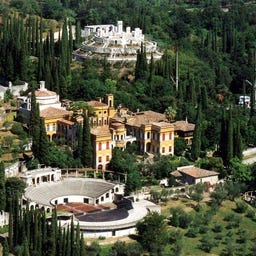
The Vittoriale degli Italiani is a beautiful and somewhat quirky destination on Lake Garda. This monumental complex, built by the eccentric poet Gabriele D’Annunzio, features everything from warships and airplanes to an amphitheater with stunning lake views. The site includes Villa Prioria, the surreal cruiser Puglia embedded in a hillside, and opulent gardens adorned with bronze sculptures and water features.
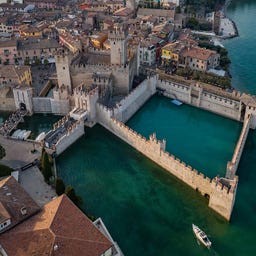
The Castello Scaligero is an imposing medieval fortress, perched on the southern tip of Lake Garda. Built between the 13th and 14th centuries by the powerful Scaliger family of Verona, it's one of Italy's best-preserved castles. Visitors can explore the beautifully restored harbor — the only surviving example of a 14th-century fortified port—and walk along the ancient ramparts. Climbing the 37-meter-high tower offers breathtaking panoramic views of Lake Garda and the charming town below, perfect for capturing memorable photos.
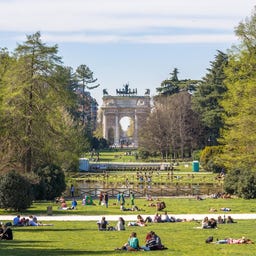
Parco Sempione, Milan’s green heart, is the ideal escape from the city's hustle. Adjacent to Castello Sforzesco, a walk through the park reveals historic landmarks like the grand Arco della Pace, commemorating Napoleon's victories.
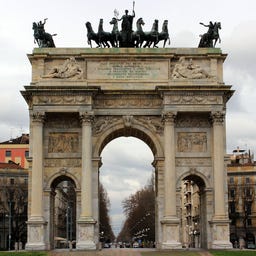
The majestic Arco della Pace at the entrance of Corso Sempione is one of Milan's most significant neoclassical monuments. This 25-meter-high triumphal arch, whose construction began in 1807 under Napoleon and was completed in 1838 during Austrian rule, is an impressive structure made of granite, topped with bronze sculptures of the goddess of peace with a six-horse chariot.
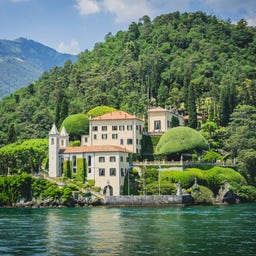
The Villa del Balbianello, perched on the tip of the Lavedo Peninsula, enchants visitors with its elegant design and magnificent gardens that stretch down to the water. Known from films like "Star Wars" and "James Bond," this 18th-century villa offers breathtaking views and a rich collection of art and antiques. Visits are only possible with a guided tour, with the opulent rooms and the loggia being particularly impressive.
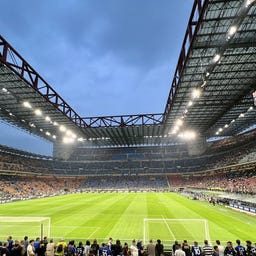
San Siro Stadium, also known as Stadio Giuseppe Meazza, is a legendary football arena in western Milan. With 80,018 seats, it's the largest stadium in Italy and home to both AC Milan and Inter Milan. Since opening in 1926, it has hosted numerous iconic football moments, including World Cup and Champions League finals. Visitors can take guided tours that offer a behind-the-scenes look at the locker rooms, players' tunnel, and pitch.
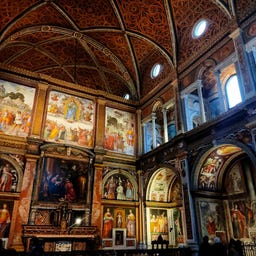
The Chiesa di San Maurizio al Monastero Maggiore is considered the "Sistine Chapel" of Milan - and rightly so: here you will find one of the best-preserved fresco cycles in Lombardy from the 16th century, mostly created by Bernardino Luini and his family.
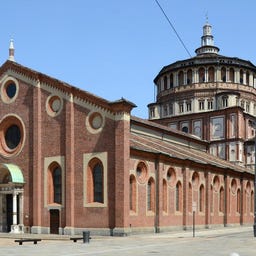
In the Chiesa di Santa Maria delle Grazie, an impressive building from the 15th century, Gothic and Renaissance elements blend into a harmonious whole. The church, commissioned by Ludovico il Moro as a family mausoleum, houses the world-famous mural "The Last Supper" by Leonardo da Vinci in its refectory.
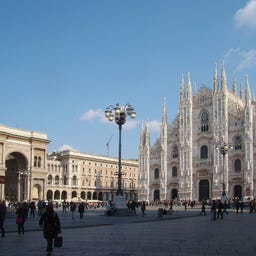
At the Piazza del Duomo, the vibrant heart of Milan, the majestic Gothic facade of the Duomo di Milano rises impressively. Covering 47,200 square meters, this is one of the largest squares in Italy, established as a marketplace in the 14th century by Azzone Visconti and shaped into its current form by architect Giuseppe Mengoni between 1865 and 1873.
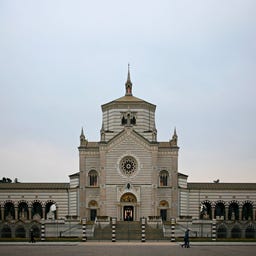
On 250,000 square meters, you will find the Cimitero Monumentale, one of the most significant historical cemeteries in Italy, which has grown into a unique open-air museum of tombstone art since its opening in 1867.
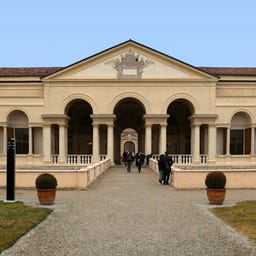
Palazzo Te, a masterpiece of Mannerist architecture designed by Giulio Romano, was built between 1524 and 1534 for Federico II Gonzaga, the Marquess of Mantua, as a palace of leisure. This stunning villa is renowned for its extraordinary frescoes and grand rooms. Highlights include the Sala dei Giganti with its ancient graffiti, where colossal frescoes depict the dramatic fall of the giants, and the Sala di Amore e Psiche, illustrating the mythological love story of Cupid and Psyche.
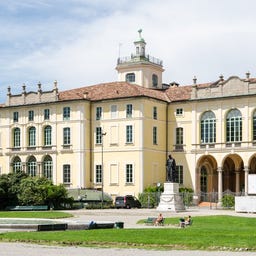
In Milan's oldest public park, you will find a green oasis covering 172,000 m², filled with magnificent cedars, magnolias, and ginkgo trees. Opened in 1784 and named after the journalist Indro Montanelli, the park is home to three significant buildings: the 17th-century Palazzo Dugnani, the Natural History Museum, and the Ulrico Hoepli Planetarium.
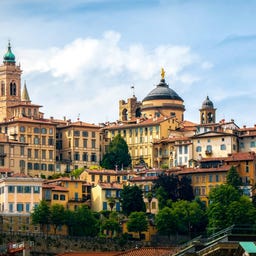

The majestic Duomo di Como has shaped the cityscape of Como since the late 14th century and is one of the most significant religious buildings in Northern Italy. The cathedral combines late Gothic, Renaissance, and Rococo elements and impresses with its magnificent marble facade, which was built between 1457 and 1486.
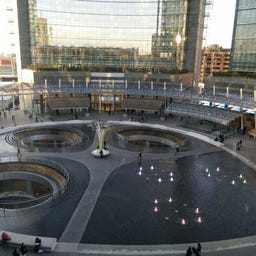
On the circular piazza Gae Aulenti, elevated six meters above the ground, you’ll find one of the most modern squares in Milan, featuring three impressive water fountains that come to life in the evenings with light and music effects. Designed by the Argentine architect César Pelli, this square is the centerpiece of the bustling Porta Nuova district and is overshadowed by Italy's tallest skyscraper, the 231-meter-high UniCredit Tower. From here, you can enjoy a spectacular view of the Milan skyline, including the Torre Garibaldi and the green Bosco Verticale, while the square fills with a vibrant mix of locals and visitors, especially on warm summer evenings.
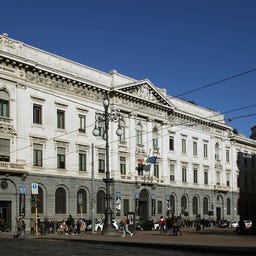
In three elegant historical palaces in the center of Milan, you will find the Gallerie d'Italia, an impressive art collection dedicated to Italian art from the 19th and 20th centuries.
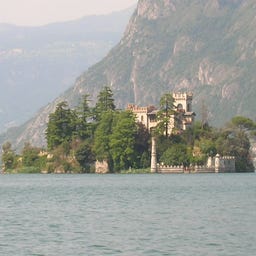
Lake Iseo impresses with its remarkable depth of 258 meters and is home to Monte Isola, the largest natural lake island in Italy. Along its shores, where people settled as far back as prehistoric times, you’ll find a diverse landscape of vineyards, orchards, and rugged cliffs.
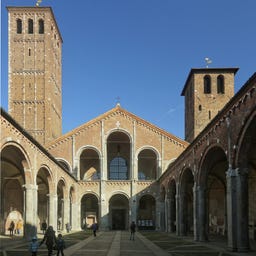
The Basilica Sant'Ambrogio is one of the most important churches in Milan, founded in the 4th century by Saint Ambrose as the Basilica Martyrum. In its current Romanesque form from the late 11th century, it impresses with two distinctive bell towers and an intricate blend of brick, stone, and white plaster.
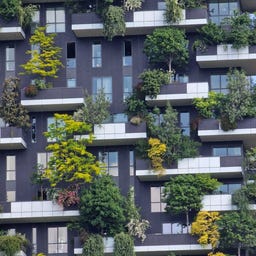
In the thriving Milanese district of Isola, the two green residential towers of Bosco Verticale rise up, shaping the cityscape since 2014. Designed by Stefano Boeri, these skyscrapers not only house 131 apartments but also over 2,000 different plant species that envelop the facades like a vertical forest.
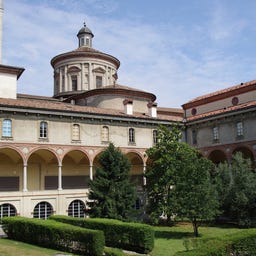
In a former Benedictine monastery from the 19th century, you will find Italy's largest science and technology museum, which has been making science and technology accessible since 1953. The Museo Nazionale Scienza e Tecnologia Leonardo da Vinci houses not only the world's most extensive collection of models based on da Vinci's designs across 50,000 m², but also 19,000 historical exhibits related to Italian industrial and technological history.
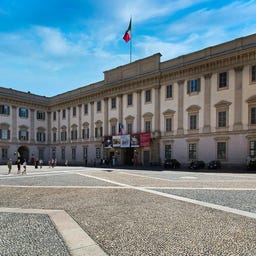
Right at the Milan Cathedral, you will find the Palazzo Reale, which served as the seat of government and power center of the city for centuries. The originally medieval building was transformed in the late 18th century by Giuseppe Piermarini in a neoclassical style and even housed the viceroy of the Napoleonic Kingdom of Italy.
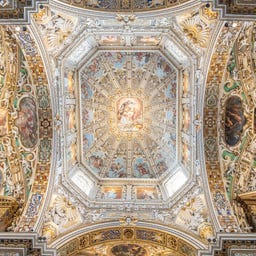
The majestic Basilica di Santa Maria Maggiore has been standing in the heart of Bergamo's old town since the 12th century, built after a vow made by the citizens during a plague outbreak starting in 1137. Its impressive architecture combines Romanesque and Baroque elements, with the unusual façade lacking a main entrance and the striking mix of gray and ochre sandstone particularly catching the eye.
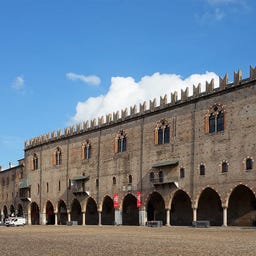
Palazzo Ducale is a magnificent complex where the powerful Gonzaga family resided from the 14th to the 17th century. This sprawling palace boasts around 500 rooms and covers 34,000 square meters, making it the sixth-largest palace in Europe! The highlight of the residence is the Camera degli Sposi, adorned with exquisite frescoes by Andrea Mantegna. Be sure to also see the stunning Cortile della Cavallerizza. Visitors can wander through the inner courtyards and gardens, explore the majestic Castle of San Giorgio, and admire the extensive art collections within the palace
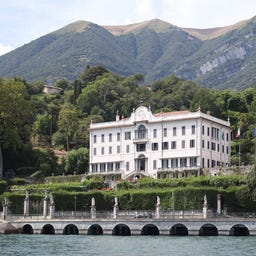
The magnificent Villa Carlotta has been perched on the shores of Lake Como since the late 17th century, combining baroque architecture with one of the most significant art collections in the region.
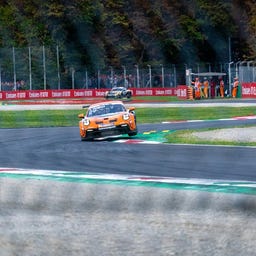
The Autodromo Nazionale Monza, one of the world’s oldest and most iconic racetracks, lies within Monza Park, just 15 km northeast of Milan. Known as the "Temple of Speed", this historic circuit draws motorsport fans from across the globe, especially for its crown jewel event, the Italian Grand Prix.
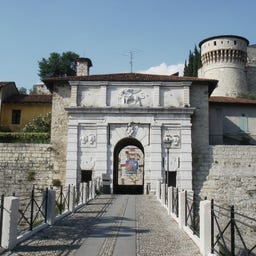
Majestically, the Castello di Brescia sits atop Colle Cidneo, overlooking the northern Italian city - it's no wonder the fortress is nicknamed "Falcone d'Italia." This expansive complex, one of the largest in Italy, has a rich history that spans from the Bronze Age through the Roman period to the Venetian rulers in the 15th century.
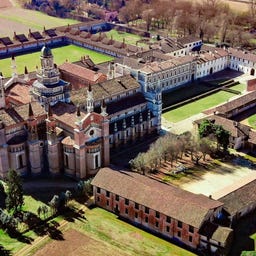
The Certosa di Pavia, a masterpiece of Lombard Gothic and Renaissance architecture, is one of the most important architectural monuments in North Italy. The magnificent facade, impressive stained glass windows, and the ornate refectory reflect the monastery's wealth. The tranquil gardens and the large cloister invite visitors to a relaxing stroll.
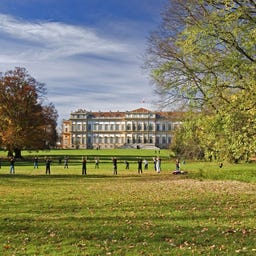
In the early 19th century, Eugenio di Beauharnais created the Parco di Monza as an addition to the Royal Villa of Monza. With its 732 hectares, it is one of the largest historical parks in Europe. The park, designed by architects Luigi Canonica and Luigi Villoresi, is still surrounded by its original 14-kilometer city wall and has been home to the world-famous racetrack Autodromo Nazionale Monza since 1922.
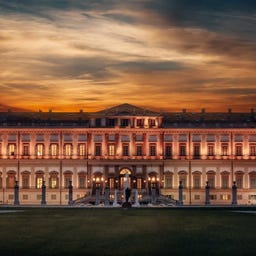
Just a few kilometers northeast of Milan, you will find one of the most impressive noble residences in Lombardy, the Villa Reale di Monza. This neoclassical palace was commissioned in 1777 by Maria Theresa of Austria as a summer residence for her son and boasts 700 rooms spread over 22,000 square meters.
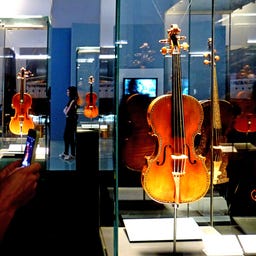
At the Museo del violino in Cremona, you will find a unique collection of historical string instruments, including masterpieces by Antonio Stradivari and Giuseppe Guarneri del Gesù. The museum, which dates back to 1894, has been located in the restored Palazzo dell'Arte since 2013 and features ten thematic exhibition rooms dedicated to the history of violin making.
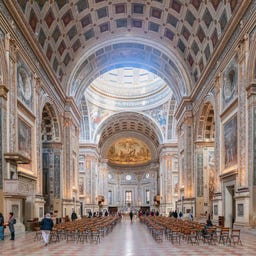
The powerful Basilica di Sant'Andrea dominates the skyline of Mantua as the largest church in the city and impresses with its Roman-inspired triumphal arch façade. Construction began in 1472 based on plans by Leon Battista Alberti and was only completed in 1732 with the finishing of the massive 80-meter-high dome.
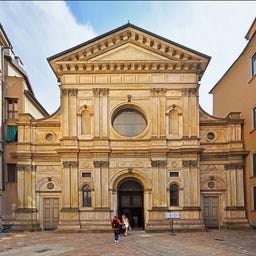
In the small Chiesa di Santa Maria presso San Satiro, you will encounter one of the most fascinating optical illusions of the Italian Renaissance: the "false choir" created by Donato Bramante is a masterpiece of perspective painting that creates an impressive sense of spatial depth.
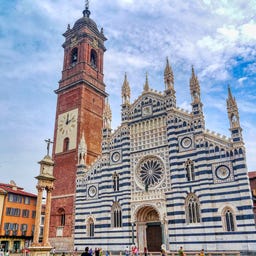
In the heart of Monza stands the Duomo di Monza, whose history dates back to the 6th century when Queen Theodolinda had a palace chapel built here. This impressive church, with its distinctive white and green marble facade, houses one of Italy's most significant treasures: the Iron Crown, which, according to tradition, contains a nail from the cross of Christ and was used for the coronation of Italian kings until the 19th century. With its 78-meter-high bell tower, the cathedral dominates the city's skyline, while inside, three naves, magnificent chapels, and stunning artworks from the Baroque to the Rococo await you.
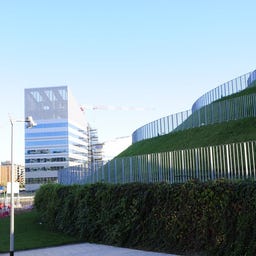
At the modern headquarters of AC Milan, the Casa Milan, you will find a fascinating blend of football history and contemporary architecture. The building, opened in 2014 and designed by Studio Valle, houses not only the club offices but also an exciting museum with a trophy collection, a fan shop, and a bistro.

In the elegant Palazzo dell'Arengario right by the Piazza del Duomo, you will find an impressive collection of 20th-century Italian art featuring works by Umberto Boccioni, Amedeo Modigliani, and Lucio Fontana.
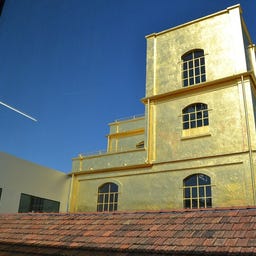
In a former gin distillery in the south of Milan, the Fondazione Prada has been unfolding since 2015 as a fascinating center for contemporary art, cinema, and culture. Founded by Miuccia Prada and Patrizio Bertelli, the complex brings together seven historic and three modern buildings, including the 60-meter high Torre tower—all designed by the renowned architect Rem Koolhaas.
Near Milan, you can find Leolandia, one of the most important amusement parks in Northern Italy. Since its opening in 1971, it has transformed from a small "Minitalia" into a 200,000 square meter adventure world.

Dramatically perched on the steep cliffs of the eastern Lago Maggiore, the Eremo di Santa Caterina del Sasso Ballaro is a monastery complex from the 13th and 14th centuries that has been recognized as a national monument since 1914.

In the elegant Villa Necchi Campiglio from the 1930s, you experience a perfectly preserved example of Italian Rationalist architecture with Art Deco elements, designed by the renowned architect Piero Portaluppi.
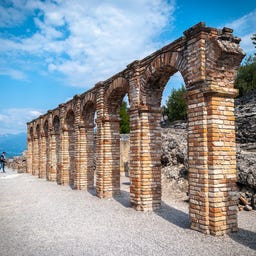
The Grottoes of Catullus in Sirmione offer an extraordinary glimpse into the grandeur of ancient Roman architecture. Perched on a promontory with fantastic views over Lake Garda, these well-preserved ruins, dating back to the beginning of the 1st century AD, were once a magnificent Roman villa. Despite the name, the poet Catullus died before the villa was built and didn't live here. Visitors can explore the extensive grounds and a small museum showcasing excavated artifacts. The combination of breathtaking scenery and fascinating history makes the Grottoes of Catullus a must-visit attraction.
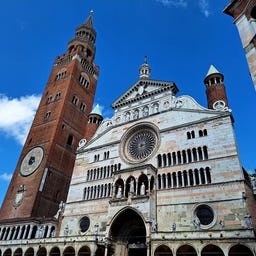
The majestic Duomo di Cremona has stood since the 12th century at the highest point of the medieval city, blending Romanesque, Gothic, Renaissance, and Baroque styles into an impressive work of art.
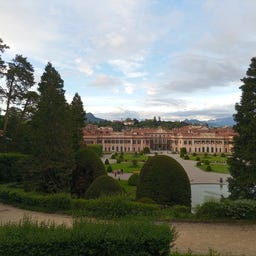
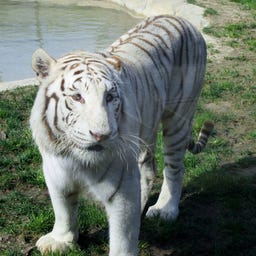
In the private wildlife park Parco faunistico Le Cornelle near Bergamo, you can expect to see around 1,200 animals from 120 different species in naturalistic habitats. Since its founding in 1981 by Angelo Ferruccio Benedetti, the park has developed into an important conservation center and is now a member of the European Zoo Association EAZA. In the 7,000 m² Selva tropicale, Italy's largest aviary, as well as in the Savana area opened in 2015, where you can see zebras and rhinos, you can observe the animals in spacious, realistically designed enclosures. Experienced nature guides are available to accompany you through the park, which also features a modern animal clinic, a reptile house, and special facilities for bears and seals.
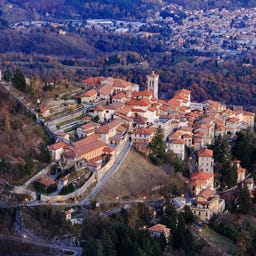
On a mountain 883 meters high in Lombardy, a two-kilometer pilgrimage path leads you to fourteen baroque chapels from the early 17th century, dedicated to the mysteries of the rosary. The Sacro Monte di Varese, a UNESCO World Heritage Site since 2003, was designed by artists like Giuseppe Bernascone and Francesco Silva and remains an important pilgrimage site to this day.
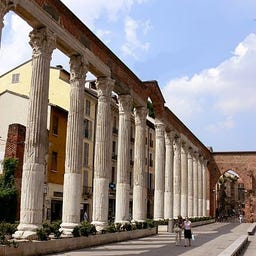
In front of the impressive Basilica di San Lorenzo, the Colonne di San Lorenzo rise - sixteen ancient marble columns that are among the few remaining witnesses of Roman Milan. These columns, about 7.5 meters high with their Corinthian capitals, originally date back to the 2nd or 3rd century and were likely moved here from a Roman temple.
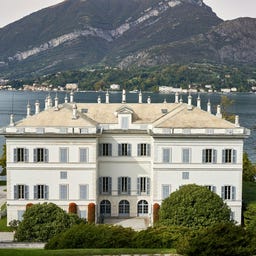
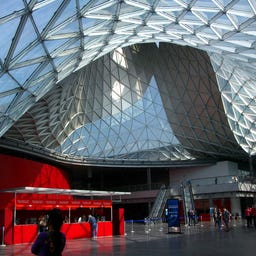
As the fourth largest exhibition center in Europe, Fieramilano impresses with 345,000 square meters of covered exhibition space, spread across 20 pavilions in eight large buildings. Since its opening in 2005, the venue has evolved into a vibrant location that not only hosts international trade fairs like the Salone del Mobile, but also serves as a site for concerts and festivals.
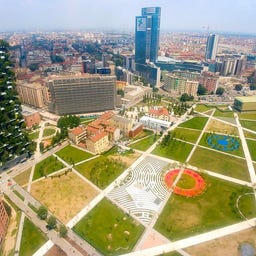
In the heart of Milan, the Parco Biblioteca degli Alberi, which opened in 2018, stretches over an impressive 9 hectares, making it the third-largest green space in the city center, located between Piazza Gae Aulenti and the Isola district. Designed by Petra Blaisse and Piet Oudolf, the park resembles a vibrant plant library with over 100 different species, 500 circularly arranged trees, and 135,000 plants.
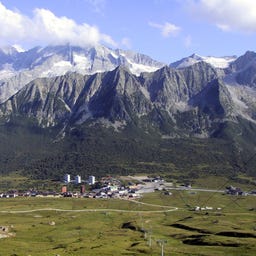
The Passo del Tonale, a historic Alpine pass between Val di Sole and Alta Valle Camonica, connects not only two significant valleys but also two chapters of history. Here, where the border between Italy and Austria-Hungary used to be until 1918, a ossuary inaugurated in 1924, containing the remains of over 800 soldiers, stands as a testament to the fierce battles of the "Guerra Bianca" during World War I.
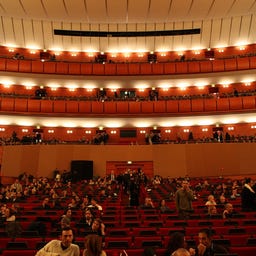
The most modern theater in Milan was built between 1997 and 2002 based on designs by Vittorio Gregotti and boasts an impressive capacity of 2,346 seats. This grand building served as a temporary home for performances of the Teatro alla Scala during its renovation from 2002 to 2004 - no surprise, as the stage dimensions were precisely modeled after the famous opera house.
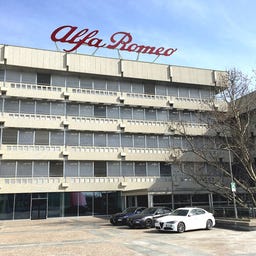
At the former Alfa Romeo factory site in Arese near Milan, you can embark on a unique journey through the history of the legendary Italian car brand across 4,800 square meters. The museum, which opened in 1976 and was modernized in 2015, houses an impressive collection of 256 vehicles and 150 historical engines, with at least one example of every Alfa Romeo model ever produced on display.
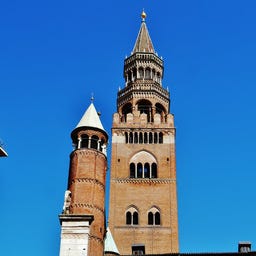
The mighty Torrazzo di Cremona, standing at 112.54 meters, is one of the tallest medieval brick bell towers in Europe and the landmark of the Lombard city. Built in several phases between the 13th and 14th centuries, the tower impresses with its unique double structure and houses one of the largest astronomical clocks in the world from the 16th century.
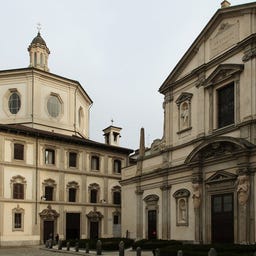
In the Chiesa di San Bernardino alle Ossa, you will find one of the most unusual churches in Milan: a baroque chapel whose walls are intricately decorated with human bones. Originally built in the 13th century, the church was given its current octagonal shape with a dome after a fire in 1712 and houses remarkable artworks, including a ceiling fresco by Sebastiano Ricci from 1695.
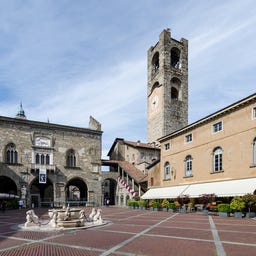
On the Piazza Vecchia, the historic center of Bergamo's upper town, you can still feel the pulse of past centuries today. This rectangular square, whose history dates back to the Roman Forum, became the political heart of the city in the 12th century with the construction of the magnificent Palazzo della Ragione.
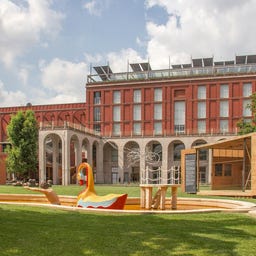
In the impressive Palazzo dell'Arte, you will find the Triennale Milano, one of the city's most important cultural centers, which has been hosting international exhibitions on design, art, and architecture since 1933. Here, you can explore not only the first museum dedicated to Italian design but also a vibrant program of theater performances, concerts, and art exhibitions.
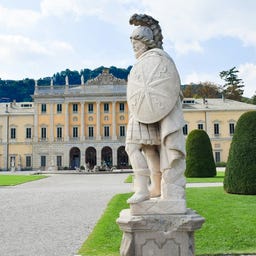
The majestic Villa Olmo has been perched on the western shore of Lake Como since the late 18th century and is considered one of the most significant examples of Italian Neoclassicism. In its opulent rooms, adorned with frescoes by Andrea Appiani, the villa welcomed illustrious guests like Napoleon Bonaparte and Giuseppe Garibaldi.

The Villa Monastero on the shores of Lake Como uniquely combines the history of a Cistercian monastery from the 12th century with the splendid architecture of a stately villa. In the expansive botanical gardens, you'll find not only exotic plants but also neoclassical buildings and the marble group "La Clemenza di Tito" from 1830.
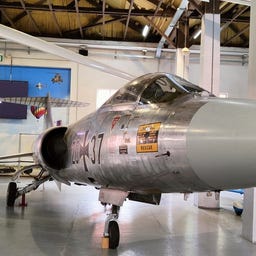
In the historic Caproni hangars right next to Milan-Malpensa Airport, you’ll find Italy's largest aviation museum, featuring over 100 aircraft across 250,000 m² of exhibition space. Here, you can admire a unique collection of historical machines, including the papal Douglas DC-9 and Italy's only airworthy DC-3, and even take a seat in one of the twelve flight simulators. The museum complex, which opened in 2010, has been continuously expanded and now also includes a modern astronomy and space pavilion, as well as indoor and outdoor play areas for children.
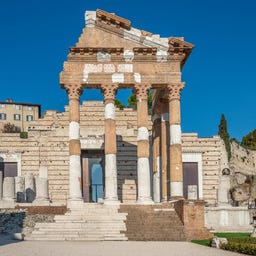
The Capitolium of Brescia is one of the best-preserved Roman temple complexes in Italy and was built in 73 AD under Emperor Vespasian.

On the shores of Lake Como, the Villa d'Este stands majestically, built in the 16th century as a summer residence for Cardinal Tolomeo Gallio and transformed into a luxury hotel in 1873. The expansive 10-hectare park features a magnificent nymph fountain from the early 17th century adorned with Roman-Baroque mosaics and an impressive water staircase leading to a statue of Hercules.
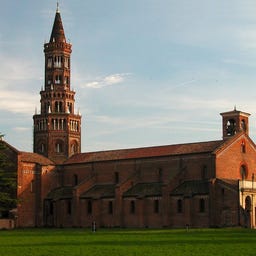
As one of the earliest examples of Gothic architecture in Italy, the Abbazia di Chiaravalle rises in the midst of the Parco Agricolo Sud Milano. Founded in the 12th century by Bernard of Clairvaux, this Cistercian abbey impresses with its Romanesque-Gothic architecture, magnificent frescoes by the Fiammenghini, and an intricately carved wooden choir from the 17th century. The monastery is also known for its distinctive bell tower "Ciribiciaccola," which houses the oldest bell of the Ambrosian system. After a tumultuous history, Cistercian monks have been living here again since 1952, taking care of the monastery to this day - and according to legend, the first Grana Padano cheese was created here in 1135.
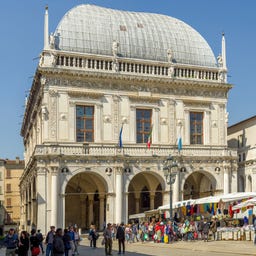
The majestic Palazzo della Loggia has been standing in the heart of Brescia since the end of the 15th century and is considered a masterpiece of Renaissance architecture. Famous architects like Donato Bramante and Andrea Palladio created this impressive city palace from Botticino marble, adorned with statues of Roman emperors and intricate columns.
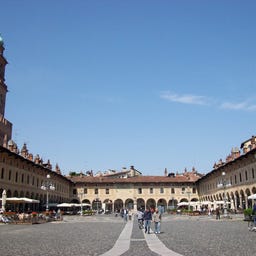
The Piazza Ducale in Vigevano is one of the most harmonious Renaissance squares in Italy, welcoming you with its uniform arcades and the curved façade of the Duomo. The 134-meter-long square was designed in 1492 under Ludovico il Moro by architects Donato Bramante and Ambrogio da Corte as a grand entrance to the Castello Sforzesco.
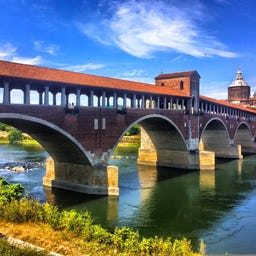
The Ponte Coperto is one of the most famous landmarks in Pavia - a distinctive covered bridge with five arches and a small chapel in the middle. The current structure was built between 1949 and 1951 by architect Ferdinando Reggiori as an authentic replica of the medieval bridge from the 14th century that was destroyed during World War II.
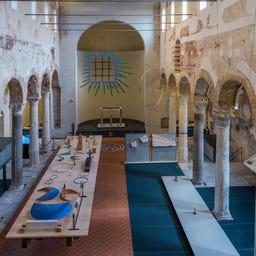
At the former monastery Santa Giulia, you can embark on a fascinating journey through the history of Brescia, from the Bronze Age to the 19th century. The expansive museum, founded by King Desiderius during the Lombard period, houses thousands of artifacts and impressive structures like the Church of San Salvatore and the Church of Santa Maria in Solario.
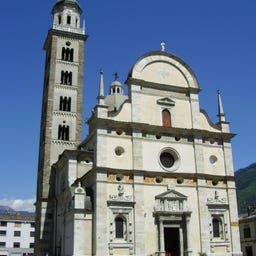
As the most significant religious building in the Valtellina Valley, the Santuario della Madonna di Tirano stands tall, built after a Marian apparition in 1504. This magnificent Renaissance structure combines Tuscan, Lombard, and Venetian architectural elements and captivates with its three richly decorated naves, an impressive dome, and a bell tower constructed between 1578 and 1641.
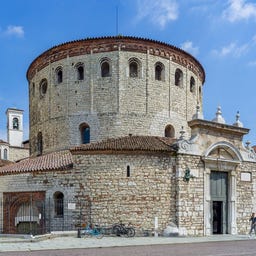
As a circular church building from the early 12th century, the Duomo vecchio - also known as "La Rotonda" - is one of the most significant examples of Romanesque architecture in Italy. The marble cathedral stands above an even older crypt from the 6th century and impresses with its circular walkway featuring eight trapezoidal columns.
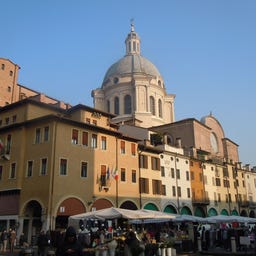
Piazza delle Erbe, situated right in Mantua's historic center, is a lively square. Surrounded by notable landmarks such as the Rotonda di San Lorenzo, the Torre dell'Orologio and the Basilica di Sant'Andrea, the piazza is an important location to explore the town. With its numerous cafes, shops and gelateria, it's the perfect spot to enjoy a leisurely stroll, or simply relax and soak in the bustling atmosphere.
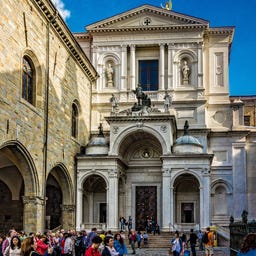
In the heart of the upper town of Bergamo stands the Duomo di Bergamo, the main cathedral of the diocese, which has been dedicated to the city’s patron Saint Alexander since 1704. This impressive building, whose foundation stone was laid in 1459, captivates with its neoclassical marble facade featuring a three-arched colonnade and a striking bell tower topped by a statue of Saint Alexander.
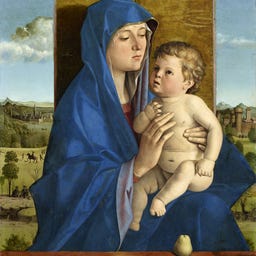
At the Accademia Carrara, you can explore one of the most significant art collections in Italy, founded in 1796 by Count Giacomo Carrara, which now includes over 1,800 paintings. The elegant neoclassical building houses masterpieces by Botticelli, Raphael, Titian, and other great names of Italian art from the early 15th to the late 19th century.
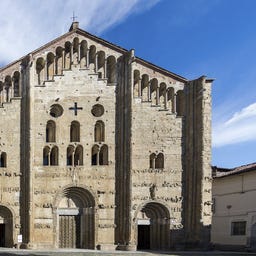
The majestic Basilica di San Michele Maggiore in Pavia is one of the most significant masterpieces of Lombard-Romanesque architecture, built between the late 11th century and 1130. Within its yellow sandstone walls, no fewer than eleven Italian kings were crowned, including Federico Barbarossa in 1155.
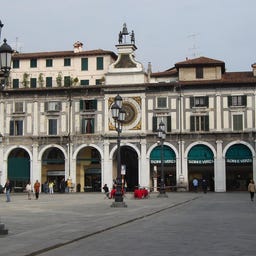
The Piazza della Loggia in the historic center of Brescia is one of the city's most important squares and a striking example of Venetian Renaissance architecture from the 15th century. Surrounded by magnificent historical buildings like the Palazzo della Loggia, which houses the city council, and the two Monti di Pietà featuring Italy's first lapidarium, this pedestrian square invites you to linger.
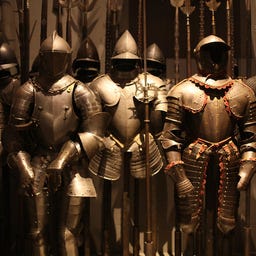
In the elegant Palazzo Moriggia Della Porta on Via Manzoni, you will discover one of Milan's most fascinating private museums, which Gian Giacomo Poldi Pezzoli bequeathed to the public in 1871. In the stylishly designed rooms that reflect eras from the Baroque to the Renaissance, you can expect an exquisite art collection featuring works by Botticelli, Perugino, and Giovanni Bellini. The museum, just a few steps from the Teatro alla Scala, survived the bomb damage of World War II and has been shining in new glory since 1951. In addition to significant paintings like Botticelli's "Madonna del Libro," the house also houses impressive collections of historical weapons, textiles, and crafts.
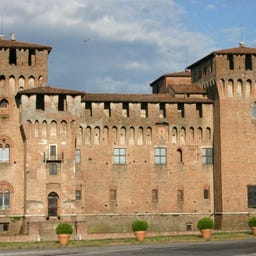
Castello di San Giorgio, part of Mantua's Ducal Palace, is a striking example of late medieval military architecture. Built between 1395 and 1406 for Francesco I Gonzaga, it is the oldest building in the Palazzo Ducale complex. With its four massive corner towers and a moat crossed by three drawbridges, it makes a monumental and well-fortified impression. The castle was transformed from a fortress into a luxurious residence by Ludovico III Gonzaga in the 15th century, becoming a cultural hub under Isabella d'Este, who hosted notable artists like Leonardo da Vinci and Andrea Mantegna. (However, da Vinci refused Isabella's repeated requests to commission a painting.) When Mantua became part of the Austrian Empire in 1814 the fortress became a maximum security prison for the Empire's political opponents.
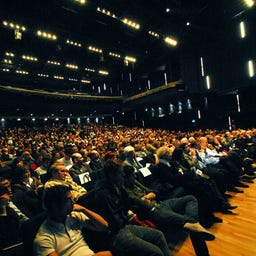
The Teatro Nazionale in Milan is one of the most important musical theaters in Italy, having experienced a dynamic history of both theater and cinema since its opening in 1924. With its 1,500 seats and an orchestra pit, it now follows the Broadway model, showcasing one musical production per season.
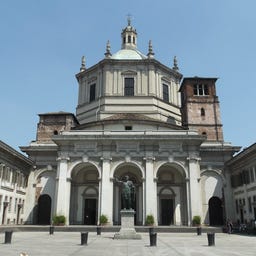
The Basilica di San Lorenzo is one of the oldest and most significant churches in Milan, with origins dating back to the late 4th century. As the first centrally symmetrical church in Western Christianity, it impresses with its unique octagonal layout featuring four apses and ancient Roman columns, known as the Colonne di San Lorenzo.
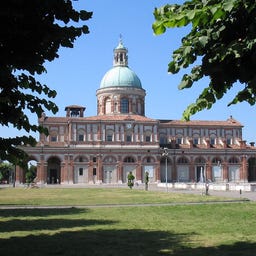
In the Lombard town of Caravaggio, you will find the impressive Santuario di Santa Maria del Fonte, a basilica from the 16th century built on the site of a Marian apparition in 1432. Designed by Pellegrino Tibaldi, the building captivates with its massive dimensions of 93 meters in length and a dome that rises 64 meters high. Inside, the magnificent main altar by Filippo Juvarra and one of the largest wooden organ fronts in Italy draw your attention.
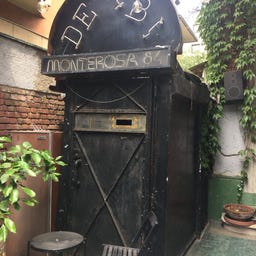
The Derby Club in Milan evolved from a simple restaurant into one of the most important music and cabaret clubs in Italy during the 20th century. Opened in 1959 by Gianni and Angela Bongiovanni on Via Monte Rosa, many later-famous Italian artists launched their careers there.
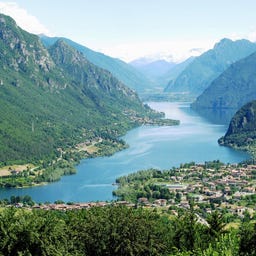
Lake Idro, also known as Eridio, is a glacial lake in the province of Brescia, situated at an elevation of 368 meters and covering an area of 10.9 km².
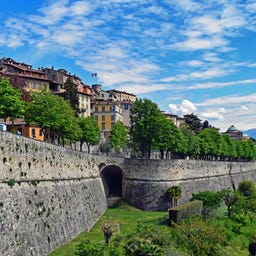
The "Venetian walls of Bergamo" are an impressive architectural structure dating back to the 16th century, well-preserved as they have not suffered any military events over the centuries. This fortification consists of 14 bastions, 2 levels, 32 sentry boxes, 100 openings for gunfire, two powder magazines, and 4 gates. In addition to this, there is a myriad of sorties and military passages, some of which have been forgotten, such as the Lower Pantano Gate, dating back to the 13th century, which was a connection to Via Borgo Canale, while the Lower Pantano Gate, which was the access to the upper part of the Visconti Citadel, has disappeared.

In a former industrial facility from the early 20th century, you will find HangarBicocca, one of the largest contemporary art centers in Milan. The impressive 15,000 square meters of exhibition space are divided into three distinctive areas - "Shed," "Navate," and "Cubo" - while the original industrial character is intentionally preserved with concrete floors and high ceilings.

The Idroscalo di Milano, often referred to as the "Sea of Milan," is a 1.6 km² artificial lake on the outskirts of Milan, situated between the municipalities of Peschiera Borromeo and Segrate.

In the heart of Milan, the Elfo Puccini awaits you as a fascinating center for contemporary theater, rooted in the experimental cultural scene of the 1970s. What began as an alternative theater project by a group of actors around Gabriele Salvatores has evolved over the decades into one of the city's most important stages.

In the Lombard city of Pavia, you can find the Basilica di San Pietro in Ciel d'Oro, a significant example of Romanesque architecture from the 11th and 12th centuries. Founded by King Liutprando, this church features a three-nave layout that houses two important burial sites: the mortal remains of the Church Father Augustinus of Hippo and the philosopher Severinus Boethius.

Beneath Milan's central train station, you will find the Memoriale della Shoah, a poignant memorial that documents the history of deportations during World War II. From here, the former Binario 21, hundreds of Jews and political prisoners were transported to concentration camps like Auschwitz between 1943 and 1945.

High above Lake Como, you will find the Santuario della Madonna del Ghisallo, a unique pilgrimage site for cyclists that dates back to a medieval apparition of Mary. Since Pope Pius XII declared the Madonna del Ghisallo the patron saint of cyclists in 1949, the small church has gathered impressive testimonies of cycling history—from historic racing bikes to legendary jerseys.

In the neo-Gothic building of the Giardini Pubblici, you will find one of the most significant natural history museums in Europe, featuring nearly three million exhibits. The impressive structure, designed by architect Giovanni Ceruti in the late 19th century, is considered the first building in Italy specifically designed as a museum.

In the Basilica di Sant'Eustorgio, one of the oldest churches in Milan from the 4th century, the complete relics of the Three Wise Men were once kept until Frederick Barbarossa had them transferred to Cologne in 1162. The 75-meter-high bell tower is topped with a symbolic star that recalls the guiding star of the Three Wise Men.

The majestic Duomo di Pavia, with its 97-meter-high dome, is one of the most significant cathedrals in Italy, built between the 15th and 20th centuries. Erected on the site of two former Romanesque churches, this Renaissance structure cleverly combines a central and longitudinal plan—an architectural innovation that was later adopted in the construction of the St. Peter's Basilica in Rome.
